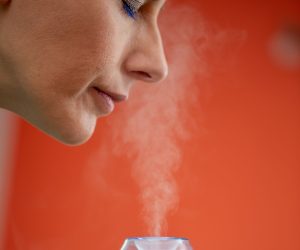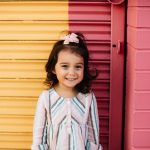Table of Contents
Humidifier Safety: Top Tips at a Glance
Humidifiers are invaluable tools for enhancing indoor air quality, offering relief from dry air by adding essential moisture to your environment. While they come with a host of benefits, ensuring their safe and effective use is paramount to avoid any potential hazards.
To help you get the most out of your humidifier while maintaining a safe home, here are the top humidifier safety tips listed in order of priority:
- Regular Cleaning and Maintenance: Prevent mold and bacteria growth by cleaning the humidifier regularly.
- Use Distilled or Filtered Water: Minimize mineral buildup and microbial growth by using purified water.
- Maintain Proper Humidity Levels: Use a hygrometer to keep humidity within the ideal range of 30-50%.
- Safe Placement of the Humidifier: Place on a stable, waterproof surface away from children, pets, and electronics.
- Choosing Cool Mist Humidifiers for Child Safety: Opt for cool mist models in homes with children to eliminate burn risks.
- Caution with Essential Oils: Only use essential oils if your humidifier is designed for them to avoid damage.
- Auto Shut-Off Feature: Choose models with auto shut-off to prevent overheating and energy waste.
- Electrical Safety Precautions: Ensure safe operation by plugging directly into a wall outlet and keeping hands dry.
- Regular Inspection for Wear and Tear: Check the humidifier regularly for any signs of damage or malfunction.
Stay tuned as we dive deeper into each of these safety tips, providing you with comprehensive insights to make informed decisions about your humidifier use.
 1. Regular Cleaning and Maintenance
1. Regular Cleaning and Maintenance
The golden rule with humidifiers? Keep them clean. It might seem like a chore, but regularly cleaning your humidifier is the cornerstone of safe use. Here’s why: standing water is a playground for bacteria and mold, and when your humidifier spews out mist, it’s not just water but potentially all the microscopic party-goers along with it, straight into the air you breathe.
So, how do you keep the festivities in your humidifier’s tank clean and safe?
- Daily Dance: Empty and rinse out the tank with fresh water every day. Think of it as giving your humidifier a little daily refresh to keep things running smoothly.
- Weekly Deep Clean: Once a week, roll up your sleeves for a deeper clean. Disconnect the humidifier, remove any filters, and clean the tank and any other removable parts with a mix of water and white vinegar or a mild disinfectant. This will help kill any lurking bacteria or mold spores. Rinse everything thoroughly with clean water to make sure no cleaning solution is left behind.
- Dry and Assemble: Make sure all parts are completely dry before you put the humidifier back together. This step is crucial because it ensures that you’re not unintentionally adding moisture to places it shouldn’t be.
Quick Clean and Maintenance Schedule
| Frequency | Action | Purpose |
|---|---|---|
| Daily | Empty and rinse tank | Prevent microbial growth |
| Weekly | Deep clean with vinegar/water or disinfectant | Remove mineral deposits and kill bacteria/mold |
| As Needed | Replace filters (if applicable) | Ensure efficient operation and prevent microbe spread |
2. Use Distilled or Filtered Water
Tap water might be fine for watering the plants or taking a shower, but it’s not always the best choice for your humidifier. Why? Because it can contain minerals that contribute to the buildup inside your humidifier and even disperse into the air as white dust. Not to mention, these minerals can provide a feast for unwanted bacteria.
Here’s how using distilled or filtered water can make a difference:
- Mineral Buildup Be Gone: Distilled or filtered water is much lower in minerals than tap water, significantly reducing buildup in your humidifier and the need for frequent deep cleaning.
- Cleaner Mist: Using purified water helps ensure that the mist your humidifier releases is free from mineral deposits and bacteria, making the air in your home cleaner and healthier to breathe.
3. Maintain Proper Humidity Levels
Keeping the humidity in your home within the sweet spot of 30-50% is crucial for both comfort and health. Too much humidity can turn your home into a breeding ground for mold, mildew, and dust mites, while too little can aggravate respiratory conditions and dry out your skin and nasal passages.
- Stay in Range: Use a hygrometer to keep an eye on your home’s humidity levels. It’s a small investment that can make a big difference in helping you maintain the right balance.
- Adjust as Necessary: If you notice humidity levels rising above 50%, it might be time to give your humidifier a break. Conversely, if the air feels too dry, don’t hesitate to turn it back on.
Ideal Humidity Levels
| Room | Ideal Humidity Level | Notes |
|---|---|---|
| Living Room | 30-50% | Balance comfort and health, avoid condensation on windows |
| Bedroom | 30-50% | Promote better sleep and respiratory health |
| Plant Room/Greenhouse | 40-60% | Specific plants may require higher humidity |
 4. Safe Placement of the Humidifier
4. Safe Placement of the Humidifier
Where you place your humidifier can impact its effectiveness and safety. A good location ensures the mist is distributed evenly without causing harm to your furniture or creating a slip hazard.
- Stable Surface: Choose a flat, stable surface where the humidifier is unlikely to be knocked over.
- Protect Your Furniture: Keep it away from wooden furniture and floors to prevent moisture damage. A waterproof mat or tray can provide an extra layer of protection.
- Keep It Out of Reach: Especially important if you have kids or pets, place the humidifier in a spot where they can’t accidentally tip it over or get too close to the mist.
Humidifier Placement Do’s and Don’ts
| Do | Don’t |
|---|---|
| Place on a stable, waterproof surface | Place directly on wood or carpet |
| Keep out of reach of children and pets | Use near electronics susceptible to water damage |
| Ensure there’s enough space for airflow | Block the mist outlet |
5. Choosing Cool Mist Humidifiers for Child Safety
When it comes to selecting a humidifier for a home with children, cool mist varieties are generally safer than warm mist or steam humidifiers, which can pose burn risks.
- Cool Mist Benefits: Besides being safer, cool mist humidifiers are also effective in easing respiratory symptoms without the risk of hot water accidents.
- Placement Matters: Even with a cool mist humidifier, it’s still important to place the unit out of reach of children to prevent any curious tampering.
Cool Mist vs. Warm Mist Humidifiers
| Feature | Cool Mist | Warm Mist |
|---|---|---|
| Safety | Safer around children, no burn risk | Risk of burns, not recommended for children’s rooms |
| Respiratory Relief | Good for congestion, allergies | Can feel more soothing for colds/flus |
| Maintenance | Easier to clean, less mineral buildup | Requires regular descaling and cleaning |
| Energy Use | Generally uses less electricity | Uses more electricity to boil water |
6. Caution with Essential Oils
While the idea of adding essential oils to your humidifier might seem appealing for extra aroma and potential health benefits, it’s important to proceed with caution.
- Check Compatibility: Only use essential oils in a humidifier if the manufacturer states it’s safe to do so. Otherwise, you risk damaging the humidifier or releasing potentially harmful compounds into the air.
- Consider Alternatives: For aromatherapy benefits, consider using a separate essential oil diffuser designed for that purpose.
 7. Auto Shut-Off Feature
7. Auto Shut-Off Feature
A humidifier with an auto shut-off function is a valuable safety feature, as it turns the device off automatically when the water level is too low.
- Prevents Overheating: This feature can prevent the humidifier from overheating, which is crucial for safety, especially when the device is not under direct supervision.
- Energy Efficient: It also helps conserve energy by ensuring the humidifier only runs when necessary.
Humidifier Features Checklist
| Feature | Why It’s Important | Recommended For |
|---|---|---|
| Auto Shut-Off | Prevents overheating and energy waste | All users, especially if using overnight |
| Adjustable Humidity Settings | Allows precise control over humidity levels | Homes with sensitive individuals, like babies or those with respiratory issues |
| Filter Indicator | Alerts when the filter needs changing or cleaning | Users who prefer minimal maintenance |
| Quiet Operation | Reduces noise, especially important in bedrooms | Light sleepers, bedroom use |
8. Electrical Safety Precautions
Humidifiers, like all electrical devices, require certain precautions to ensure safe operation.
- Direct Plug-In: Always plug your humidifier directly into a wall outlet rather than using an extension cord or power strip, which can overheat.
- Dry Hands: Ensure your hands are dry before touching the plug or the humidifier to avoid electric shock.
9. Regular Inspection for Wear and Tear
Regularly inspect your humidifier for any signs of wear or damage, as these can affect its performance and safety.
- Look for Damage: Check the cord for fraying, the tank for cracks, and ensure all components are functioning properly.
- Replace as Needed: Don’t hesitate to replace parts or the entire unit if you notice any damage or consistent performance issues.
Wrapping It Up: Humidifier Wisdom for Healthy Air
Humidifiers can significantly improve the comfort and healthiness of your home’s air, especially during dry seasons. By following these safety tips, you can enjoy the benefits of your humidifier without worry. Remember, the key to humidifier safety lies in regular maintenance, proper use, and a bit of common sense. Happy humidifying!
Additional Resources
For further reading on humidifier care and safety, consider visiting the websites of the Environmental Protection Agency (EPA) or the Consumer Product Safety Commission (CPSC). These resources offer valuable information on maintaining indoor air quality and product safety standards.


 4. Safe Placement of the Humidifier
4. Safe Placement of the Humidifier 7. Auto Shut-Off Feature
7. Auto Shut-Off Feature




